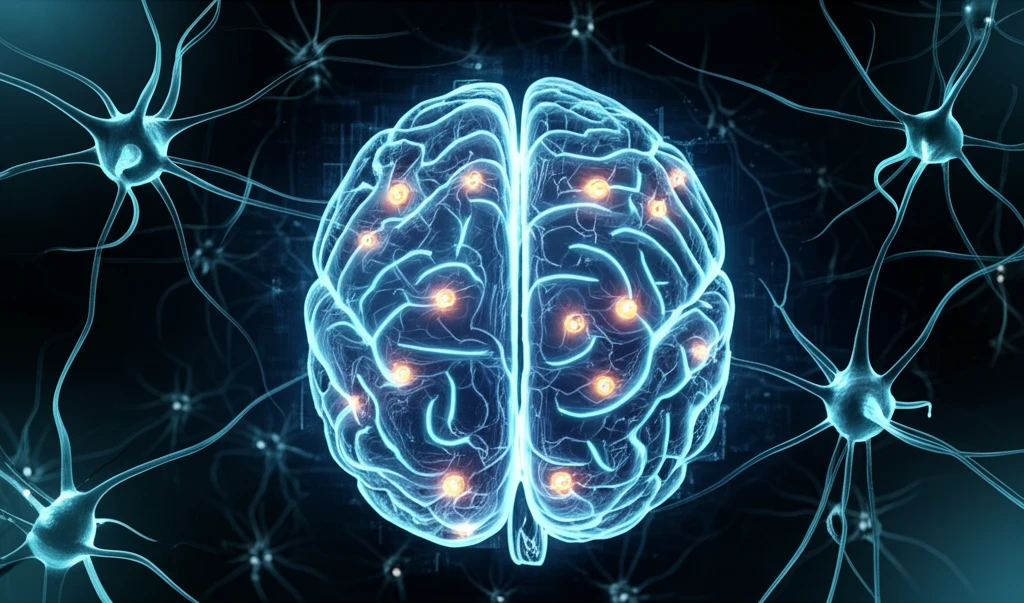
Unlocking the Mystery of Autoimmune Encephalitis: A Comprehensive Guide
"Navigate the complexities of autoimmune encephalitis: Understand symptoms, diagnostic breakthroughs, and the latest treatments to improve patient outcomes."
Encephalitis, at its core, is an inflammation of the brain, a condition that traditionally required an invasive brain biopsy for definitive diagnosis. Today, a more pragmatic approach focuses on recognizing clinical features like encephalopathy, combined with neurological symptoms and supportive findings from CSF analysis, MRI, or EEG. For a long time, the causes of encephalitis remained elusive, with over 100 recognized culprits ranging from viral, bacterial, parasitic, and fungal infections to immune and autoimmune responses.
This article will focus on autoimmune encephalitis syndromes, which recent studies suggest account for approximately 30% of all encephalitis cases. Key players include acute disseminated encephalomyelitis (ADEM) and anti-N-methyl-D-aspartate receptor (anti-NMDAR) encephalitis. Although these syndromes aren't new, advancements in biomarker technology have enabled clinicians to identify and treat them more effectively.
The breakthrough in understanding autoimmune encephalitis came from insights gained in peripheral autoimmune diseases such as myasthenia gravis. It's now understood that autoimmune encephalitis involves autoantibodies that target cell surface proteins, including receptors and synaptic proteins. Crucially, these autoantibodies are detected using cell-based assays that preserve the native conformation of the target antigen, allowing immunoglobulins to bind to extracellular epitopes.
Clinical Syndromes and Autoantibody Diagnostic Markers

While autoantibody identification has greatly improved our ability to diagnose autoimmune encephalitis, many patients lack a diagnostic autoantibody biomarker. Therefore, recognizing clinical syndromes remains vital. Limbic encephalitis (LE), affecting the limbic system (primarily the medial temporal region and hippocampus), presents with temporal lobe seizures, cognitive alterations, personality changes, and psychiatric symptoms. MRI scans often reveal inflammatory features and swelling in the temporal lobe, particularly the medial temporal lobe and amygdala, typically bilaterally (Fig. 17.1), and CSF may show inflammatory changes. Anti-NMDA receptor encephalitis can also be diagnosed clinically with the help of the anti-NMDA receptor antibody.
- The autoantibody is typically IgG, with limited significance for IgM and IgA.
- Antibody binding often involves a restricted epitope, such as the amino terminus of the NR1 subunit of the NMDA receptor in anti-NMDAR encephalitis.
- In anti-NMDAR encephalitis, the antibody is produced intrathecally, less so in anti-MOG-associated demyelination.
- Cell surface antibodies have pathogenic effects in vitro, downregulating receptors and altering neuronal circuits. Animal models have shown pathogenic effects, mostly for anti-NMDAR encephalitis.
Navigating the Future of Autoimmune Encephalitis
Many unanswered questions remain in autoimmune encephalitis, including the role of infection, improved definition of seronegative autoimmune encephalitis, consideration of neuroprotection, and a better understanding of ethnic or genetic vulnerability factors. In addition, there are still no randomized controlled trials to guide clinicians in treating these conditions. By staying informed about the latest research and treatment options, patients and families can navigate the complexities of this condition with greater confidence and hope.
